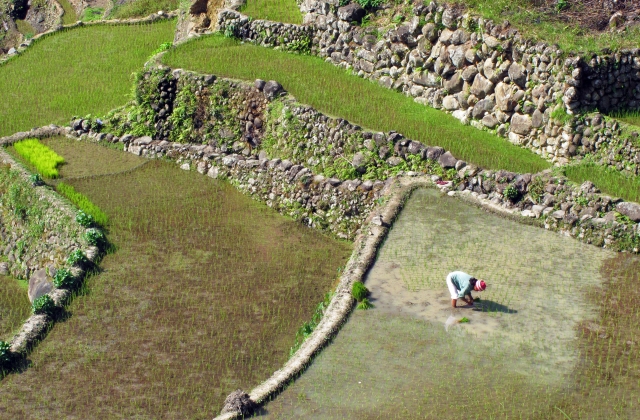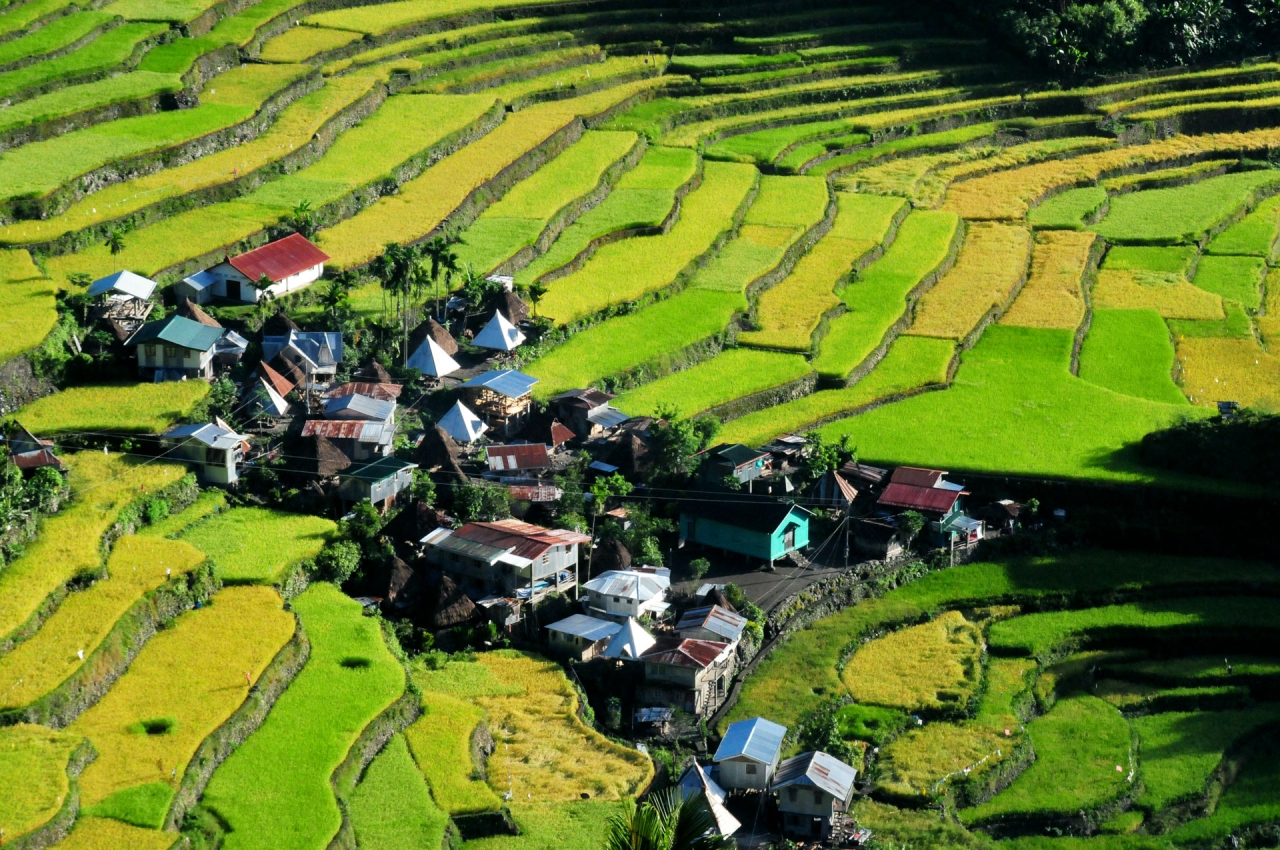A tour of the Banaue rice terraces is a must-do for many people visiting the Philippines. Known in pop culture as the 8th Wonder of the World and recognized as the oldest rice terraces in the planet, this site is truly impressive.
Below are three things you might not know about these magnificent terraces and if you remember one of these factoids, you're sure to impress your Philippine tour guide.
Made by hand
Mostly made by hand with the help of some small hand-held tools (think sturdy sea shells used for digging) the local indigenous people created a masterpiece that would be enjoyed for years to come. It's remarkable to realise that these terraces that could wrap around half of the world if each were placed next to each other were mostly constructed by hand.
And as such, with the increased tourism and grazing animals, maintenance is essential to keep the terraces working and is done by the indigenous Ifugao living in the area. These ancient practices are then passed down to their offspring and they, in turn, continue the maintenance. Most of the plots are also privately-owned by different families and they are responsible for up-keeping their part of the terrace.
 photo by Zean Villongco
photo by Zean Villongco
Walls made of rock and mud
Today, if we were going to build terraces, companies would pour concrete to make sure that the walls are sturdy and will withstand time and weather. But in the past, concrete and modern bricks were not available so local people had to use what they had available – rocks and mud.
Using the natural river current as a transportation device, locals would carefully choose rocks and fit them together like a puzzle before slathering a heaping helping of mud in between the exposed cracks. These walls were put in place so when the water floods the terraces, the barricade would prevent the water from spilling.
On first blush it's hard to believe that simple stone and mud would hold these terraces together but they’ve held for over 2,000 years thus far with the locals keeping up the practice and mending the walls when necessary.
In addition to building the walls, locals had to make sure that each terrace was perfectly level so that the water would distribute evenly. And they even built underground conduits where the water could drain if an overflow were to occur – not a simple feat by today’s standards let alone thousands of years ago.
Irrigated only by natural streams
Sophisticated engineering machines and tools weren't available in the old days when the rice terraces were first created so the local indigenous people had to work with mother nature. It took a trained eye and a true understanding of the land to be able to make sure that the natural water source reached every rice terrace effectively so that each crop would thrive.
So how did they do this? They used the streams and water as a transportation method to literally "go with the flow" and move the rocks into the desired, most-effective position so that the springs and streams could be naturally diverted into the terraces comparable to modern irrigation.
In the '90s, the terraces were decorated by the American Civil Engineers with an award honouring the engineering achievement of the local people. And with the terraces stretching 400 miles long with the furthest natural water source coming from 1,800 meters away and trickling down to the lowest tier, none would argue that this award is well deserved.
So if you're ready to make your trip to the rice terraces, make sure to book your Banaue rice terraces adventure with Uncharted Philippines, the country's adventure travel experts.

 photo by Zean Villongco
photo by Zean Villongco